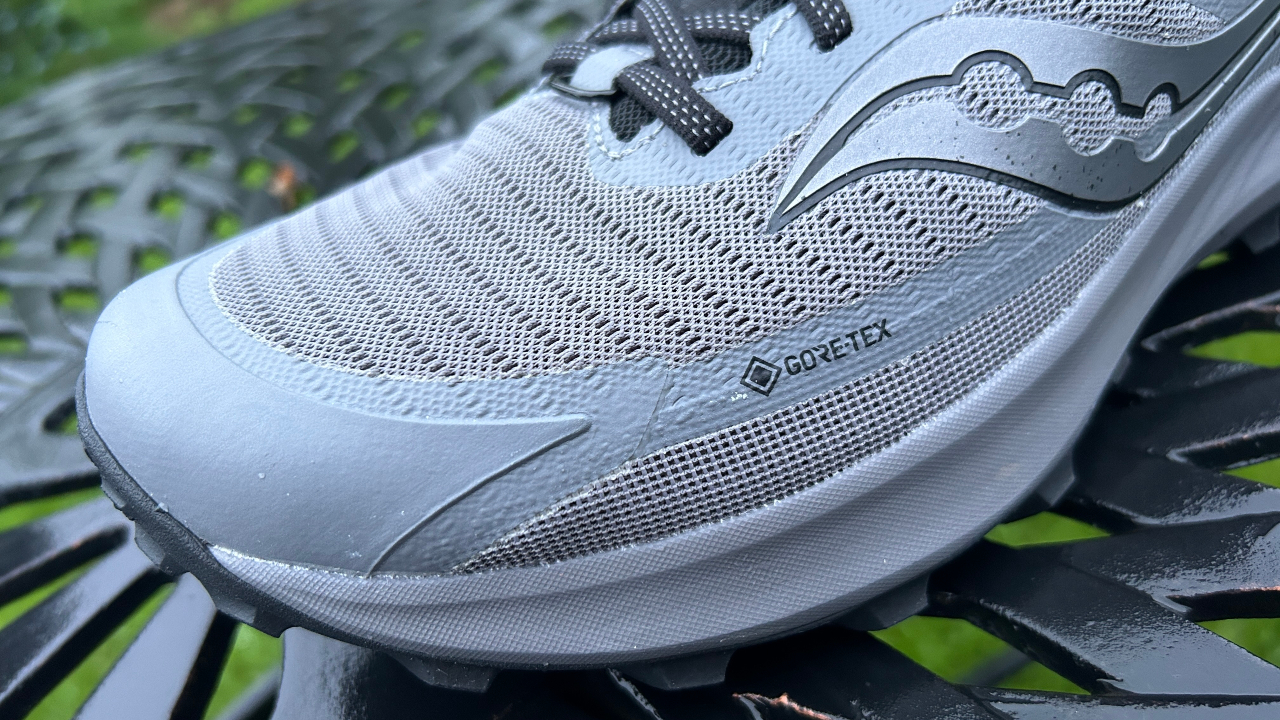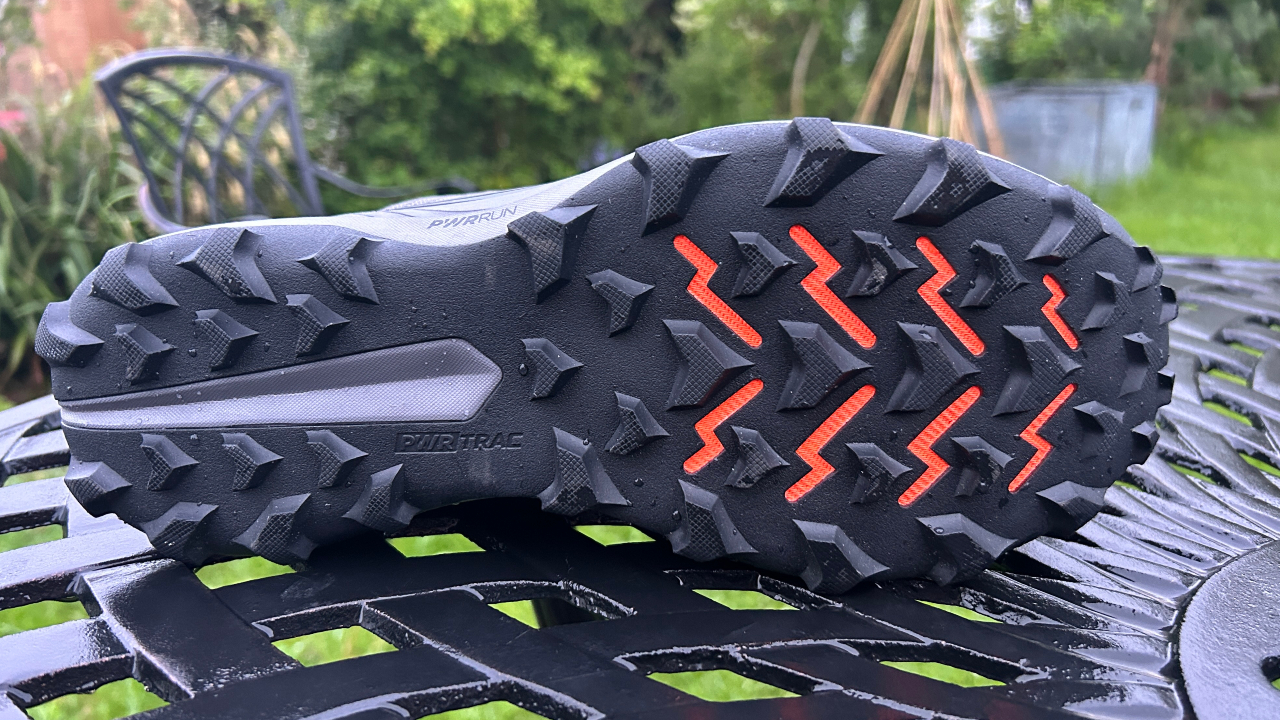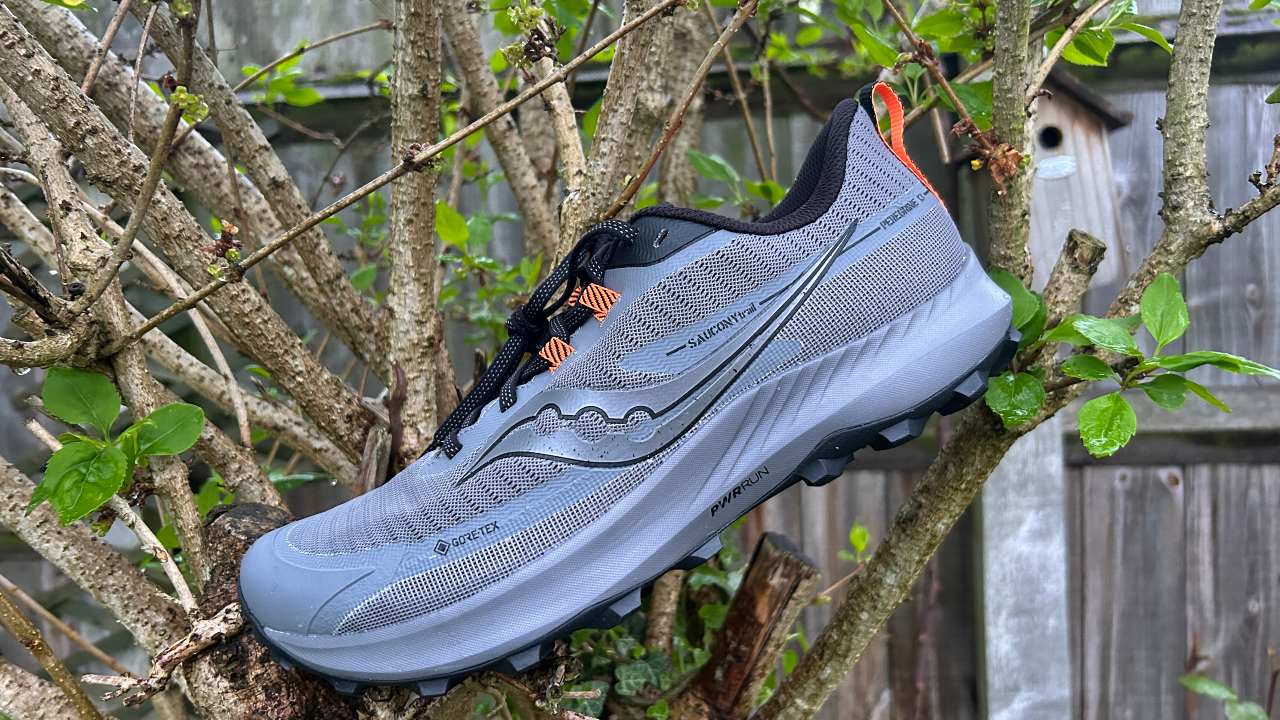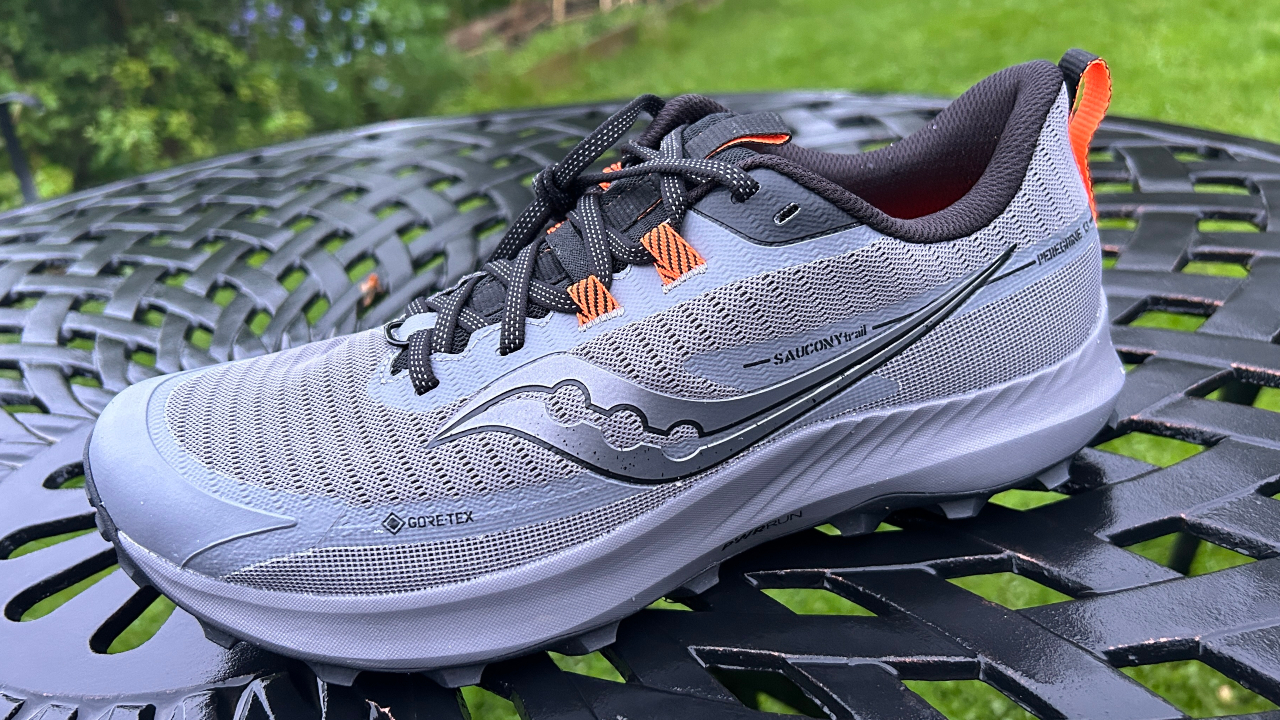
The Saucony Peregrine 13 GTX is the Gore-Tex version of the latest edition of the Peregrine, an all-rounder trail shoe that’s suitable for most terrain. The Peregrine 12 was a big update for that line, which reduced the weight of the shoe significantly. The 13th version mostly sticks to that template while dropping more weight and adding a little more cushioning.
These changes continue to improve the Peregrine’s versatility and, while it doesn’t have the softest or most exciting ride, it’s one of the best trail-running shoes because of the range of terrain and paces it can handle.
Saucony Peregrine 13 GTX Review: Price And Availability
The Saucony Peregrine 13 GTX costs $160 in the US and £140 in the UK, while the standard version of the shoe without a Gore-Tex liner costs $140/£130.
Design And Fit
Aside from its Gore-Tex liner, the 13 GTX is the same as the standard Peregrine 13. The main changes to the shoe are that the midsole stack has increased while the overall weight has dropped.
The Peregrine 13 GTX has a stack height of 28mm at the heel and 24mm at the forefoot for a 4mm drop, which is a rise of 1.5mm across the board on the Peregrine 12. The shoe weighs 10.8oz/308g in my US size 10, which is light for a shoe with a Gore-Tex liner and a lugged outsole like this. The standard Peregrine 13 is a fair bit lighter, and both versions of the shoe have dropped in weight compared with the Peregrine 12 and Peregrine 12 GTX.

Although it adds weight, the Gore-Tex liner is not that noticeable on the shoe. The upper is still flexible and comfortable, and the shoe fitted well in my normal size, with no rubbing in the toe box and a secure hold in the midfoot and heel. The addition of Gore-Tex makes the Peregrine 13 GTX feel warmer when using it on hot days, but the benefit is the extra protection you get in cold and wet conditions.
The midsole is made from Saucony’s PWRRUN foam, with a softer PWRRUN+ liner. It’s not a particularly soft or lively set-up, but comfortable enough for the trails while being stable. The shoe has a rock plate for underfoot protection from jagged surfaces, and the upper has a protective film on it in high-impact areas to increase durability.
On the outsole there are 5mm chevron-shaped lugs that bite well into soft ground, as well as gripping on harder surfaces, even in the wet. The outsole of the Peregrine 13 has been adjusted to increase the spacing on the lugs compared with the 12 so they shed mud better, while also rounding the outer lugs to create a smoother feel on hard surfaces.
How I Tested This Shoe

I’ve run 30 miles in the Saucony Peregrine 13 GTX, including a couple of 10-milers at a mix of paces. Most of my running has been on dry trails because it’s summer, but I did get in one wet and muddy run. I have also tested several past versions of the Peregrine, though this is my first time using the Gore-Tex version.
Running Performance
The Peregrine has long been one of my favorite trail-running shoes because unlike many all-rounders, it’s capable on the wet and soft ground trail runners often have to contend with. That remains the case with the Peregrine 13, which had no trouble with grip during my muddy run. The Gore-Tex liner is helpful for keeping the mud out of the shoe, though I had to be careful to avoid any particularly deep puddles where the water could come in over the sides.
The time I most appreciated the Gore-Tex liner was when running on wet grass, which I could plow through without fear of my feet getting damp. For the most part, the Gore-Tex liner wasn’t essential for my running, but if you frequently run in snowy conditions in particular it will be invaluable.
There are downsides to the extra protection: the increase in weight on the shoe, plus the fact it is hotter to use on warm days. On one 10-mile sunny run I noticed the extra warmth of the shoe and would have preferred something more breathable.
However, I still found the Peregrine 13 GTX to be a light and nimble shoe despite the added weight from the liner. I did one run where I picked up the pace to around 6min/mile on undulating ground and it didn’t feel heavy or cumbersome up hills or on narrow trails. I’ve enjoyed racing in the Peregrine in the past and the latest version, being lighter, is a benefit for that purpose.

The ride is not the springiest, and there are trail shoes that use better foams to deliver increased bounce, as well as shoes that are more comfortable over longer distances, like the Saucony Xodus Ultra 2. The Peregrine has more bite in soft conditions and is more agile on the foot, but on well-maintained trails it’s firmer and duller underfoot than others.
Is The Saucony Peregrine 13 GTX Worth It?
The Saucony Peregrine 13 GTX is a great trail-running shoe and the updates improve it. However, they’re not huge updates so if you can find a deal on the standard Peregrine 12 or 12 GTX that would be the better-value pick.
I didn’t find the Gore-Tex liner necessary and would opt for the standard Peregrine 13 because I’d rather have the lighter shoe. If you run in cold conditions on snowy trails, or through wet grass, the Gore-Tex liner will be worth having.

I prefer the ride in the Saucony Xodus Ultra 2, which is bouncier and more comfortable, and the Hoka Speedgoat 5, which has a smooth ride aided by its rocker design. The Peregrine has better grip on soft ground and is lighter, but it’s also firmer.
Another all-rounder to consider is the Evadict MT Cushion 2 from Decathlon, which is great value and has similar versatility to the Peregrine 13 in the terrain it grips on. It’s heavier and less comfortable than the Peregrine, but if you just need a trail shoe for occasional outings on varied terrain the Evadict MT Cushion 2 will serve you well.







